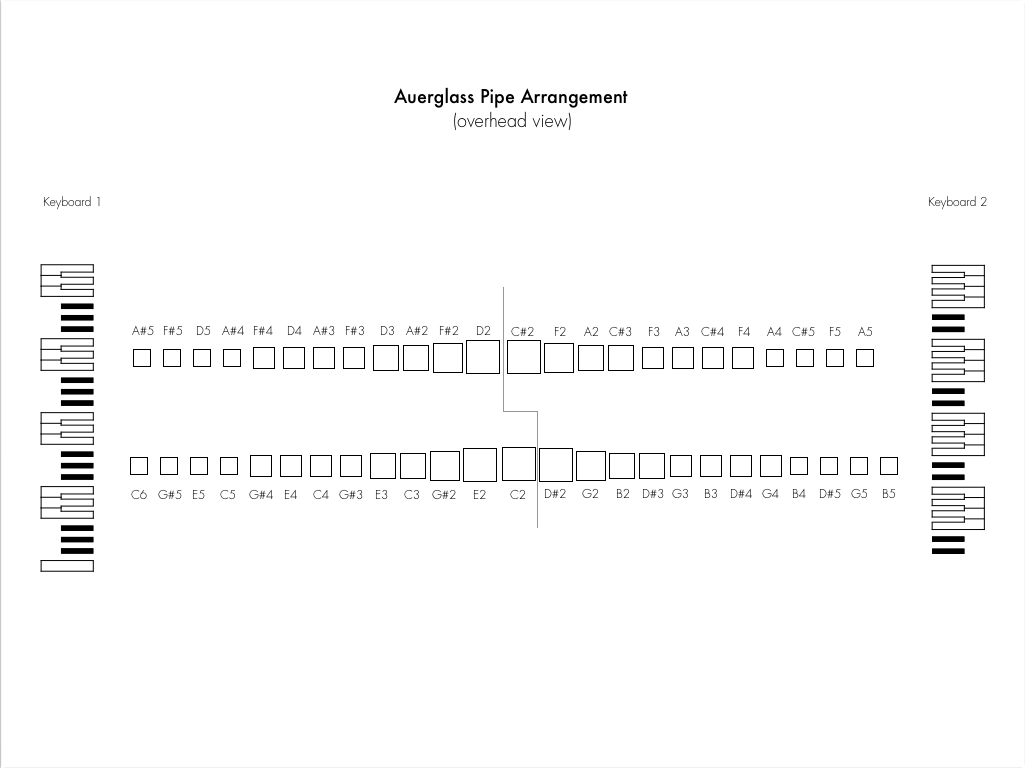Composed for the Auerglass pipe organ, an instrument created by Tauba Auerbach and Cameron Mesirow of Glasser. The world premiere of the piece was at SFMOMA on April 28th, 2022, as part of Auerbach’s exhibition, S v Z. The above video is from a rehearsal on April 27th, 2022, with performers Nayoung Jung and Michelle Moeller.
The Auerglass has a very unique premise: it can only be played by two people at one time, with each player supplying the wind for the other player’s pipes. Each one of the two keyboards has only half of the notes of the chromatic scale, an offset whole tone scale. The layout of the pipes themselves has an interesting symmetry to it. The notes alternate not only from left to right, but also back to front. High notes are placed at the outer reaches of the organ, some 15 feet apart. As you approach the lower notes of the scale, the pipes meet in the center.

Esse Idem Esse, latin for “to be the same”.
This composition explores the stereo aspects of the Auerglass pipe layout; how one organ can be made to sound like two, and how two players can sound together as one. In this context, ‘to be the same' can mean multiple things.
Much like in the practice of hocketing, where a single melody is shared among two or more parts, playing the Auerglass requires the players to think and move as a single organism. Here, even to create a single sustained chord, players must closely coordinate--both in the dispensation of wind to the pipes, and the sharing of the keyboard notes that make up that chord.
It’s also possible to challenge the idea of hearing the organ as a single instrument. Although the sound emerges from only one set of pipes, the physical distance between many of the pipes is large enough that, under the right compositional conditions, it’s possible to perceive the notes as coming from multiple sound sources. The opening of the piece features an interlocking cascade of notes that fall from the outer edges to meet in the center of the organ. Throughout the piece there is a mirrored sense of bilateral space; the notes, chords and progressions are selected with their relative right and left positions in mind.
Score available upon request.